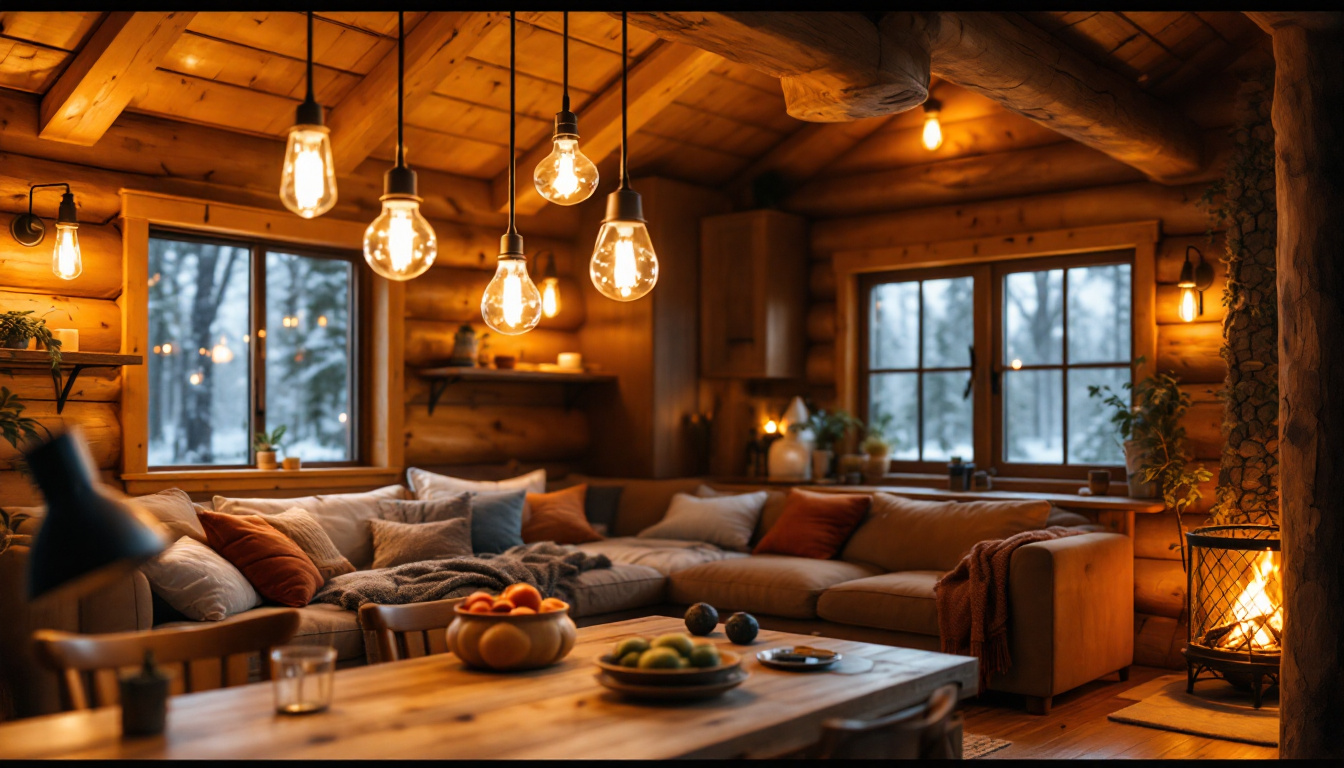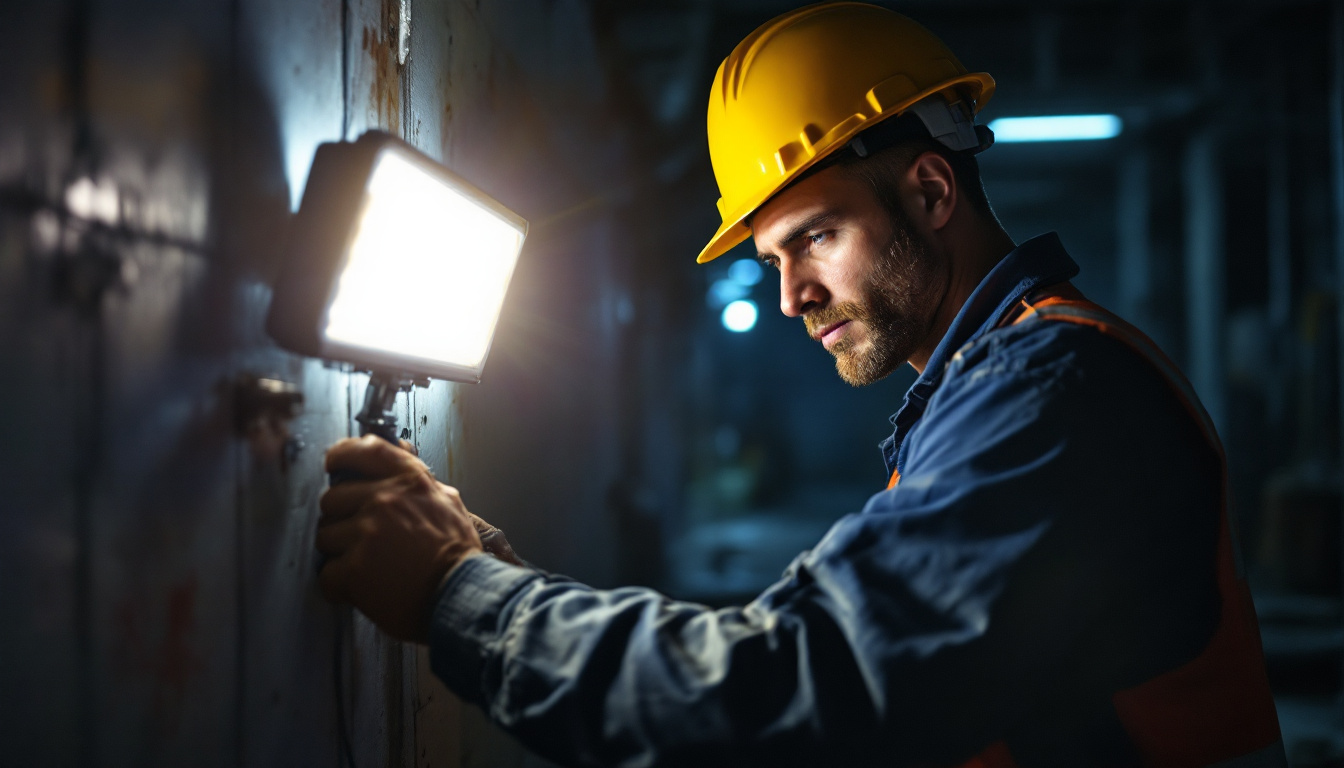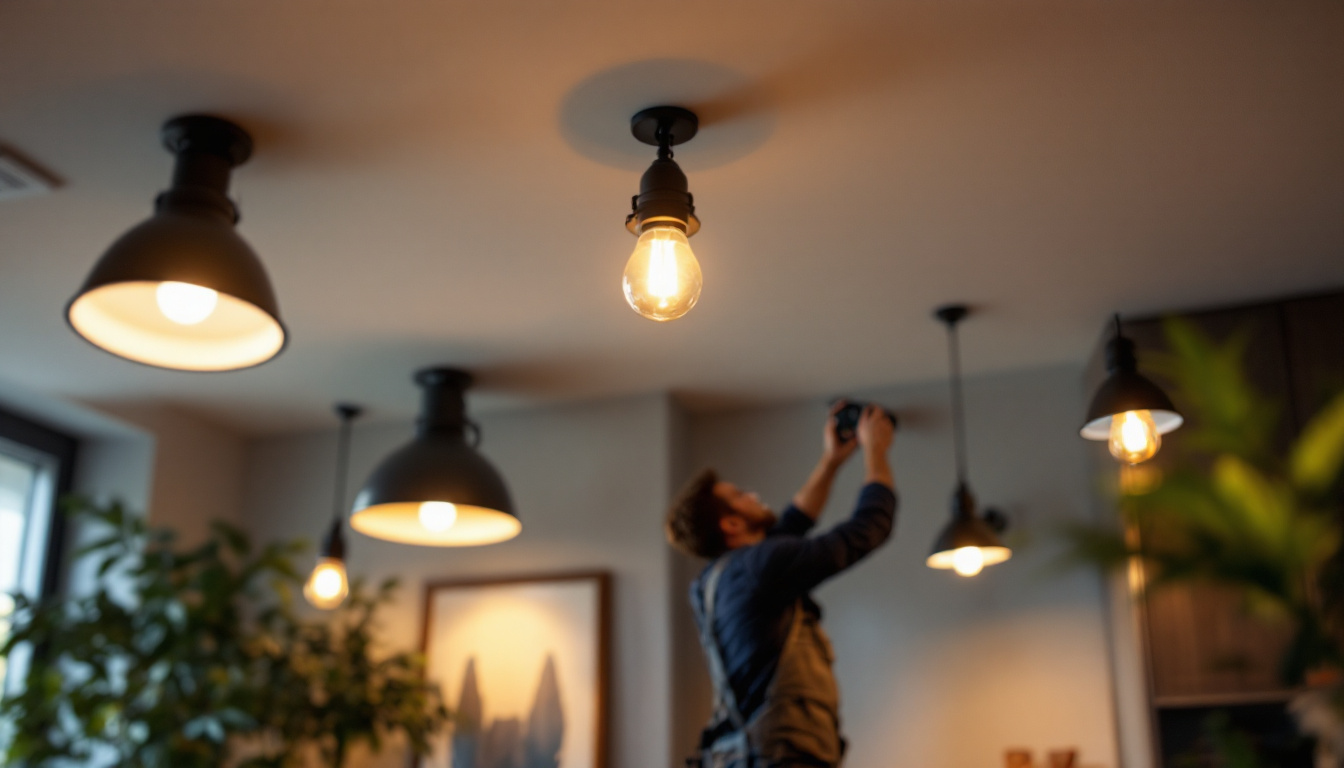
In the world of lighting design, cabin light fixtures play a crucial role in creating ambiance, functionality, and aesthetic appeal. For lighting contractors, understanding the nuances of cabin lighting can significantly enhance their projects and satisfy clients. This article explores top strategies that lighting contractors can employ to optimize cabin light fixture installations, ensuring both beauty and efficiency.
Before diving into specific lighting strategies, it is essential to grasp the unique aesthetics of cabins. Cabins often blend rustic charm with modern comforts, requiring a careful selection of light fixtures that complement the overall design. Lighting contractors must consider the architectural style, materials used, and the natural surroundings when choosing fixtures. The interplay between indoor and outdoor spaces is also crucial, as many cabins are designed to create a seamless transition between nature and the interior, inviting the beauty of the outdoors inside.
Many cabins feature wood, stone, and other natural materials. Light fixtures should harmonize with these elements. For instance, wrought iron or wooden fixtures can enhance the rustic feel, while fixtures with glass elements can add a touch of elegance. The key is to strike a balance that reflects the cabin’s character while providing adequate illumination. Additionally, the choice of finishes on these materials can significantly impact the overall ambiance; for example, a matte finish on wood can create a softer, more inviting atmosphere, while a polished stone can reflect light and add a dynamic quality to the space.
Consistency in design is vital. Lighting contractors should aim for a cohesive look throughout the cabin by selecting fixtures that share design elements, such as color, shape, or material. This approach not only enhances aesthetic appeal but also ensures that the lighting scheme feels intentional and well thought out. Moreover, incorporating layered lighting—such as ambient, task, and accent lighting—can elevate the design further. Ambient lighting provides overall illumination, while task lighting focuses on specific areas like reading nooks or kitchen counters, and accent lighting can highlight artwork or architectural features, creating depth and interest in the cabin’s interior.
As sustainability becomes increasingly important in design, lighting contractors should also consider energy-efficient options that align with the cabin’s aesthetic. LED fixtures, for example, can provide the desired warmth and brightness while consuming less energy than traditional bulbs. Additionally, smart lighting systems can be integrated to allow for customizable settings that adapt to the time of day or the activities taking place, further enhancing the cabin’s functionality without compromising its charm. By selecting energy-efficient lighting solutions, cabin owners can enjoy both beauty and practicality, ensuring their retreat remains comfortable and eco-friendly.
While aesthetics are important, functionality cannot be overlooked. Cabin lighting must serve various purposes, from providing ambient light to task lighting for specific activities. Lighting contractors should evaluate the needs of each space within the cabin to ensure that the lighting design is both practical and visually appealing. This evaluation process often involves considering the cabin’s layout, the activities that will take place in each room, and the natural light available throughout the day. By understanding these factors, contractors can create a lighting plan that enhances the cabin’s usability while complementing its design.
One effective strategy is to layer light sources. This involves combining ambient, task, and accent lighting to create a well-rounded lighting scheme. Ambient lighting provides overall illumination, while task lighting focuses on specific areas such as reading nooks or kitchen counters. Accent lighting can highlight architectural features or artwork, adding depth and interest to the space. For instance, strategically placed pendant lights over a kitchen island not only serve as task lighting for meal prep but also act as a striking focal point that draws the eye. Additionally, using wall sconces to frame a fireplace can create a cozy atmosphere, making the cabin feel inviting during chilly evenings.
Incorporating dimmers and smart controls can significantly enhance the functionality of cabin lighting. Dimmers allow for adjustable brightness, enabling occupants to create the desired mood for different occasions. Smart controls can offer convenience and energy efficiency, allowing homeowners to manage their lighting remotely or set schedules for automatic adjustments. For example, a smart lighting system can be programmed to gradually brighten in the morning, simulating a natural sunrise, which can help occupants wake up more gently. Furthermore, integrating voice-activated systems can add an extra layer of ease, allowing users to control their lighting with simple commands, enhancing both comfort and accessibility within the cabin environment.
With a growing emphasis on sustainability, lighting contractors must consider energy efficiency when selecting cabin light fixtures. Not only does this approach benefit the environment, but it can also lead to cost savings for homeowners in the long run.
LED fixtures are a popular choice for energy-efficient cabin lighting. They consume significantly less energy than traditional incandescent bulbs and have a longer lifespan. Additionally, LED technology has advanced, offering a wide range of styles and color temperatures to suit various design preferences. Contractors should educate clients on the benefits of LED lighting, encouraging them to make informed choices.
Maximizing natural light is another effective strategy for energy efficiency. Lighting contractors can work with architects and builders to design spaces that take advantage of windows, skylights, and open layouts. By allowing natural light to flood the cabin, the reliance on artificial lighting can be reduced, creating a more sustainable environment.
The selection of light fixtures is critical to achieving the desired ambiance and functionality in a cabin. Lighting contractors should consider various factors when making recommendations to clients.
There is a diverse array of fixture styles available, ranging from chandeliers and pendant lights to sconces and recessed lighting. Each type serves a different purpose and can dramatically alter the atmosphere of a space. For example, a rustic chandelier can serve as a stunning focal point in a dining area, while recessed lighting can provide subtle illumination in a cozy living room.
When selecting fixtures, size and scale are essential considerations. A large fixture can overwhelm a small space, while a tiny fixture may get lost in a grand room. Contractors should guide clients in choosing appropriately sized fixtures that enhance the cabin’s proportions and overall design.
Proper installation is paramount to ensuring the effectiveness and safety of cabin light fixtures. Lighting contractors should adhere to best practices to deliver high-quality results.
Safety should always be a top priority during installation. Contractors must comply with local electrical codes and standards to ensure that all fixtures are installed correctly and safely. This includes using appropriate wiring, securing fixtures properly, and ensuring that all connections are insulated and protected from moisture, especially in cabins located in humid environments.
The placement of fixtures can significantly impact the effectiveness of the lighting design. Lighting contractors should carefully consider the layout of each room, ensuring that fixtures are positioned to provide optimal illumination. For example, placing sconces at eye level can create flattering light for a hallway, while pendant lights should be hung at a height that allows for unobstructed views and easy movement.
Effective communication with clients is essential for successful cabin lighting projects. Lighting contractors should take the time to educate clients about the various options available and the benefits of different fixtures and lighting strategies.
Many clients may not be familiar with lighting concepts such as color temperature, lumens, and fixture styles. Lighting contractors should explain these terms in simple language, helping clients understand how each element can influence the overall atmosphere of their cabin. This knowledge empowers clients to make informed decisions that align with their vision.
After installation, contractors should offer maintenance tips to help clients keep their cabin lighting in optimal condition. This may include advice on cleaning fixtures, replacing bulbs, and troubleshooting common issues. Providing this information fosters a sense of trust and establishes a long-term relationship with clients.
Staying current with trends in cabin lighting can give contractors a competitive edge. Understanding what is popular can help in making informed recommendations to clients.
One trend gaining traction is the blend of industrial and rustic styles. This combination often features raw materials, such as metal and wood, creating a unique aesthetic that appeals to many cabin owners. Lighting contractors can explore fixtures that embody this trend, offering clients a modern yet timeless look.
As technology advances, smart lighting solutions are becoming increasingly popular. These systems allow homeowners to control their lighting through mobile apps or voice commands, providing convenience and customization. Lighting contractors should stay informed about the latest smart lighting products and integrate them into their designs when appropriate.
Cabin light fixtures are more than just functional elements; they are integral to creating a welcoming and aesthetically pleasing environment. By understanding cabin aesthetics, maximizing functionality, considering energy efficiency, and choosing the right fixtures, lighting contractors can elevate their projects to new heights. Through effective installation, client education, and staying abreast of trends, contractors can ensure that their cabin lighting designs not only meet but exceed client expectations.
Ready to take your cabin lighting designs to the next level? At LumenWholesale, we provide lighting contractors with an exceptional range of spec-grade lighting products that blend quality with unbeatable wholesale value. Say goodbye to local distributor markups and hello to our direct-to-contractor prices, ensuring your projects shine without straining your budget. With our commitment to industry standards and hassle-free bulk purchasing, plus free shipping, you can trust that you’re getting premium lighting solutions at the best price. Elevate your lighting game and discover the best value in wholesale lighting with LumenWholesale today.

Discover how LED work lights can revolutionize your projects by saving lighting contractors both time and money.

Discover essential insights into outdoor house lighting that every contractor should know.

Discover why purchasing work lights in bulk from local distributors might not be the best choice.

Unlock the secrets of pot light light bulbs with our comprehensive guide tailored for lighting contractors.